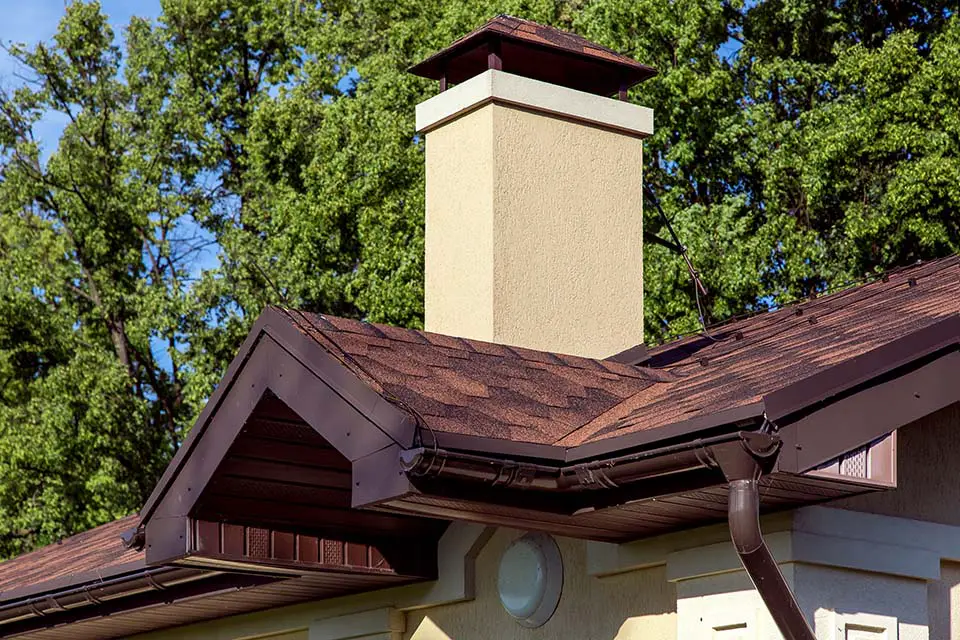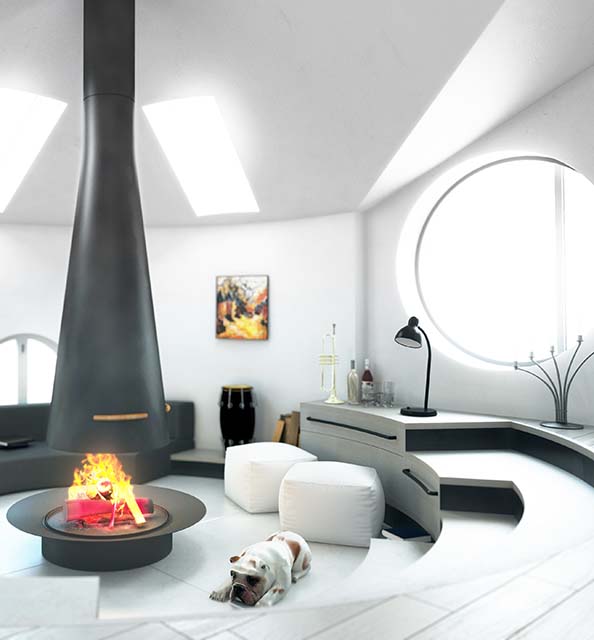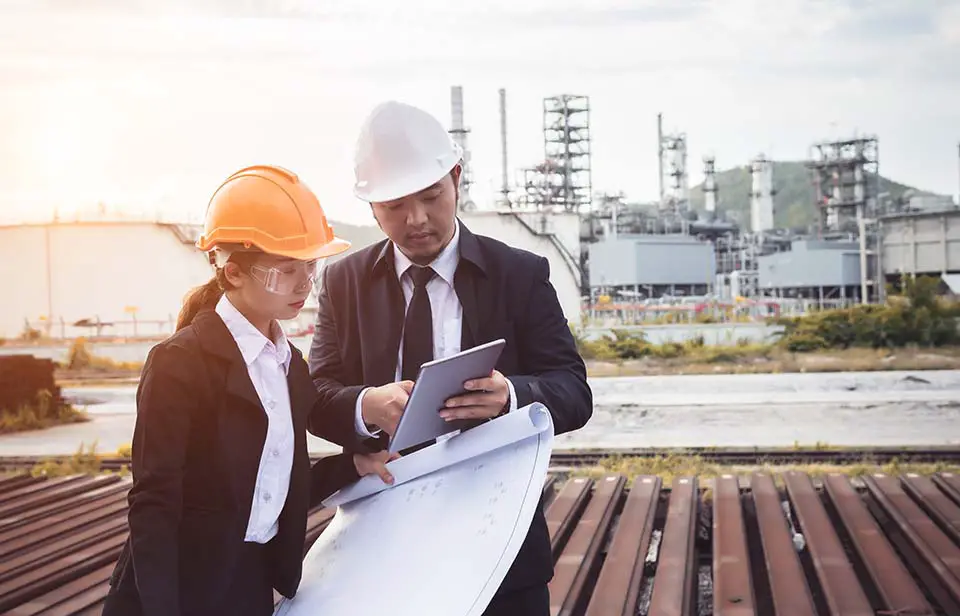I love to be by my fireplace. I love the smell of the wood-burning and the heat it brings. I like to curl up with a good book in my favorite chair and snuggle with my fur-baby on the couch.
Unfortunately, a fireplace and its chimney do come with some upkeep. It’s not fireside scotch and marshmallows all day.
Chimney liners are a direct ventilating path between an appliance or fireplace and the exterior chimney. They provide a protective layer, containing the combustion products, direct them to the outside atmosphere, and protect the chimney walls from heat and corrosion.
Contents
- How To Install A Chimney Liner
- Are there Different Types of Liners?
- What are the Risks of a Defective Liner?
- When Should Someone Invest in a Chimney Liner?
- How is the Condition of a Liner Evaluated?
- How does the Installation Process Work?
- How Much does it Cost to Install a New Liner?
- How is a Chimney Liner Maintained?
How To Install A Chimney Liner
Are there Different Types of Liners?
Yes, there are three different types of chimney liners:
- Cast-in-place liners are a type of liner made from materials like those found in concrete. This type is pumped into the flue, creating a protective tunnel from the top to the bottom. Cast-in-place liners are often found in aging or historical chimneys to serve as an additional layer of support and protection.
- Clay tile liners, also referred to as “terra cotta”, are a layer of fired clay with a length of approximately 2 ft. These tiles are stacked atop each other before being sealed with a heat-resistant mortar. Clay tile liners are frequently found in standard brick chimneys.
- Metal liners are most commonly used to repair or replace damaged or missing clay tile liners. They are made from aluminum or stainless steel and are the most popular upgrade/replacement.
What are the Risks of a Defective Liner?

Liners with a defect, regardless of size of said defect, pose a significant threat. Defects can begin a process of erosion that compromises the structural stability of the chimney as well as cause carbon monoxide to leak into the building. Furthermore, defects can result in a build-up of combustible substances, such as creosote or soot, posing a dangerous fire hazard.
Should those substances combust, the fire will not be contained within the flue and will subsequently spread into the building.
In the case of gas-fueled furnaces and appliances, large amounts of water vapor are produced that can cause damages. In addition to the quantities of vapor, gas and oil-fueled furnaces produce acidic exhaust that can eat away at the inside of the chimney.
Liners that are offset can result in a fire or the release of noxious gases into the building. This can also result in structural damage to the chimney itself.
When Should Someone Invest in a Chimney Liner?

There are three circumstances in which one should consider this investment:
- There are no existing liners (chimneys in older and historical homes were often not fitted with one during construction).
- There has been damage to the existing ones. This damage can be caused by age, shifting, or use.
- A new appliance, such as a furnace, a stove, a water heater, etc., is being installed in the building and connected to a masonry fireplace.
Note: In the greater Washington D.C. metropolitan area, existing WSSC regulations mandate that any oil or gas-fueled appliances be connected to metal chimney liners.
How is the Condition of a Liner Evaluated?
To evaluate the condition of an existing liner, a certified sweep will be sent to the location to perform a Level 2 inspection. This inspection will include a video evaluation of the inside of the chimney to determine if a replacement or installation is necessary.
How does the Installation Process Work?

Before the installation begins, the relining team will place protective cloths are the base of the fireplace in order to protect flooring and any nearby furnishings. Any decorative or fragile items on or around the fireplace will be moved in order to prevent any damages. Additionally, any accessories such as grates or doors, will be removed as well.
In the event of a masonry chimney, the relining team will begin by thoroughly cleaning it to remove any creosote, soot, or tar build-up. The team will also check for any damaged, loose, or missing materials that could potentially inhibit the installation process.
If the masonry chimney is connected to a wood-burning furnace, the pre-existing defective clay liner will be fully removed before the installation begins. This process is referred to as “breakout”. Certified reliners will utilize a high-power drill to dismantle the old liner. Cardboard and plywood are used to cover the fireplace opening and prevent debris from entering the building.
After the defective lining has been fully removed, the new lining will be lowered in from the top. Typically, this requires relining worker at the top of the chimney and another at the bottom, together using a rope to navigate the new lining into position.
Once it is securely in place, the relining team will hand-seal the chamber using a heat-resistant cement. This process is known as “parging” and serves to insulate and smooth out the interior walls of the flue. This promotes proper ventilation and helps prevent the build-up of combustible substances in the future. This process finishes with the relining time pouring an insulation mix around the new installation.
In the case of hearth stoves and certain appliances, the installation process begins with a special connector being attached to the liner in accordance with the manufacturer’s instructions as well as the standards of the NFPA (National Fire Protection Association).
To complete the installation, the relining team will install a termination cap or damper-system to protect the fireplace or appliance from animal intrusions and inclement weather conditions.
How Much does it Cost to Install a New Liner?

The price of an installation varies depending on a variety of factors. On average, a metal liner for a gas-fueled furnace or appliance will cost around $1,800 to $2,500, whereas installation in a fireplace can cost anywhere from $2,700 to $4,000.
The cost of an installation depends on the type and size of the new liner, the type of roof the relining team must work on, the types of possible connectors, and the number of appliances.
How is a Chimney Liner Maintained?
In order to maintain a safe and functioning liner, it is important that the system be evaluated and cleaned on a regular basis.
This is for the safety of the building and its residents as well as for keeping up with local codes and regulations. In the case of fuel-based appliances, cleanings and evaluations may have to be more frequent depending on the amount of usage. The entire liner and any of its parts must be thoroughly cleaned and evaluated.

